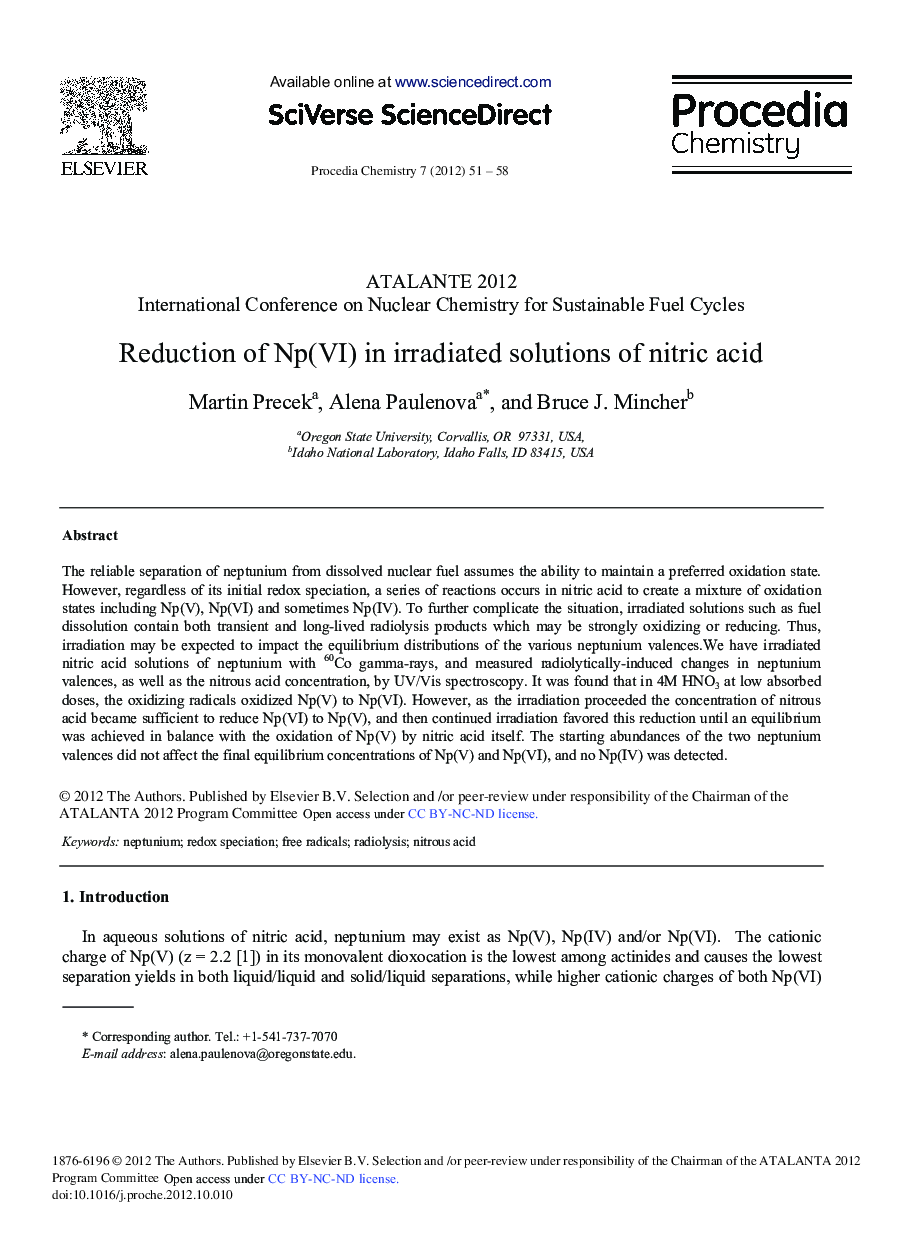| Article ID | Journal | Published Year | Pages | File Type |
|---|---|---|---|---|
| 240092 | Procedia Chemistry | 2012 | 8 Pages |
The reliable separation of neptunium from dissolved nuclear fuel assumes the ability to maintain a preferred oxidation state. However, regardless of its initial redox speciation, a series of reactions occurs in nitric acid to create a mixture of oxidation states including Np(V), Np(VI) and sometimes Np(IV). To further complicate the situation, irradiated solutions such as fuel dissolution contain both transient and long-lived radiolysis products which may be strongly oxidizing or reducing. Thus, irradiation may be expected to impact the equilibrium distributions of the various neptunium valences.We have irradiated nitric acid solutions of neptunium with 60Co gamma-rays, and measured radiolytically-induced changes in neptunium valences, as well as the nitrous acid concentration, by UV/Vis spectroscopy. It was found that in 4 M HNO3 at low absorbed doses, the oxidizing radicals oxidized Np(V) to Np(VI). However, as the irradiation proceeded the concentration of nitrous acid became sufficient to reduce Np(VI) to Np(V), and then continued irradiation favored this reduction until an equilibrium was achieved in balance with the oxidation of Np(V) by nitric acid itself. The starting abundances of the two neptunium valences did not affect the final equilibrium concentrations of Np(V) and Np(VI), and no Np(IV) was detected.
